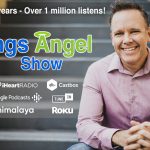 Money and Yard Sales: How to make the most or spend the least
Money and Yard Sales: How to make the most or spend the least
Whether you’re on the sell-side or the buy-side of money and yard sales, you want to be successful. Here are some tricks and strategies for how to make the most or spend the least.
For both sellers and buyers, participating in a regional or block sale is ideal. If you live anywhere close to the 127 Yard Sale corridor (127yardsale.com), spanning from Michigan to Alabama, you might consider participating. Claiming the title of “The World’s Longest Yard Sale”, it runs 690 miles. Even if you don’t live directly along the route, there are places renting space where you can set up shop. Other areas and states boast similar events. Check out gsalr.com/blog/longest-yard-sales/.
Money and yard sales – How to make the most
Timing: People often wait until Saturday to hold their sale but that can really cut into your profits. Not only are buyers very busy, but you’re also competing with all the other Saturday sales. Instead, start your sale on Friday or even on Thursday, to catch more buyers.
Pricing: There are two schools of thought here. On the one hand, if you place a price on everything, you might make less money by pricing things higher or lower than people are willing to pay. This can cause people to pass entirely or be delighted at your low price when you could have gotten more. On the other hand, if you don’t price things, some people are shy to ask and negotiate. They may just walk away. Do whichever method you have time for and feel most comfortable with. Realize, however, that there are dishonest people who will switch tags on you. To help combat this, keep a master list of your best items and your prices for them. You’re under no obligation to sell at what a tag says, so be bold in addressing tag switches if they happen.
To make your master list, price items between 10-45% of their original retail price. If you don’t remember the cost, look up the item online. Remember, people want a bargain but you also want to make a reasonable amount. The better the quality, as well as the more uncommon the item, the higher the price you can ask.
Finally, use unit pricing to move more items. For example, have a box where people can pick two toys for $1.
Presentation: People hate digging through large piles, especially just thrown on a tarp on the ground. Many simply won’t look at those items. Organize things attractively, up off the ground, and group like items together. You’ll also get more people to stop at your sale if you display large items in the view from the road. Furniture and bigger toys, in particular, encourage people to stop and shop.
Along with making your sale itself attractive, take time to tidy your yard and cut the grass. After all, curb appeal isn’t just for home sales.
Items: You can sell just about anything. As long as it’s in acceptable condition, someone is likely to want it. However, don’t sell anything that would be unsanitary like open bottles of lotion.
Sell food items like cold bottled water and soda or hot dogs fresh off the grill to make extra money.
Advertise: Let people know online about your sale and ask friends to share your post. Also, put up clear, easy to read, sturdy signs that point people to your location. It might be old-fashioned but signs work.
Money and yard sales – How to pay the least
Pricing: If you don’t agree with the asking price, negotiate. Most people aren’t offended at haggling. The key is to not become emotional. Be kind and ready to walk away if the deal isn’t right for you. Another strategy is to offer one price for several items. This can score you lower prices than paying for each item individually.
Paying: Carry small bills and change. It makes buying faster and looks better if you negotiated a lower price.
Timing: Go early or go late: both strategies can work. The sooner you go, the better the selection. With an edge over buyers who are not out yet, you’re more likely to make bundle bargains. You can also try the strategy of going late in the day when sales are nearly ended. You can snag steals from sellers eager to get rid of remaining merchandise.


